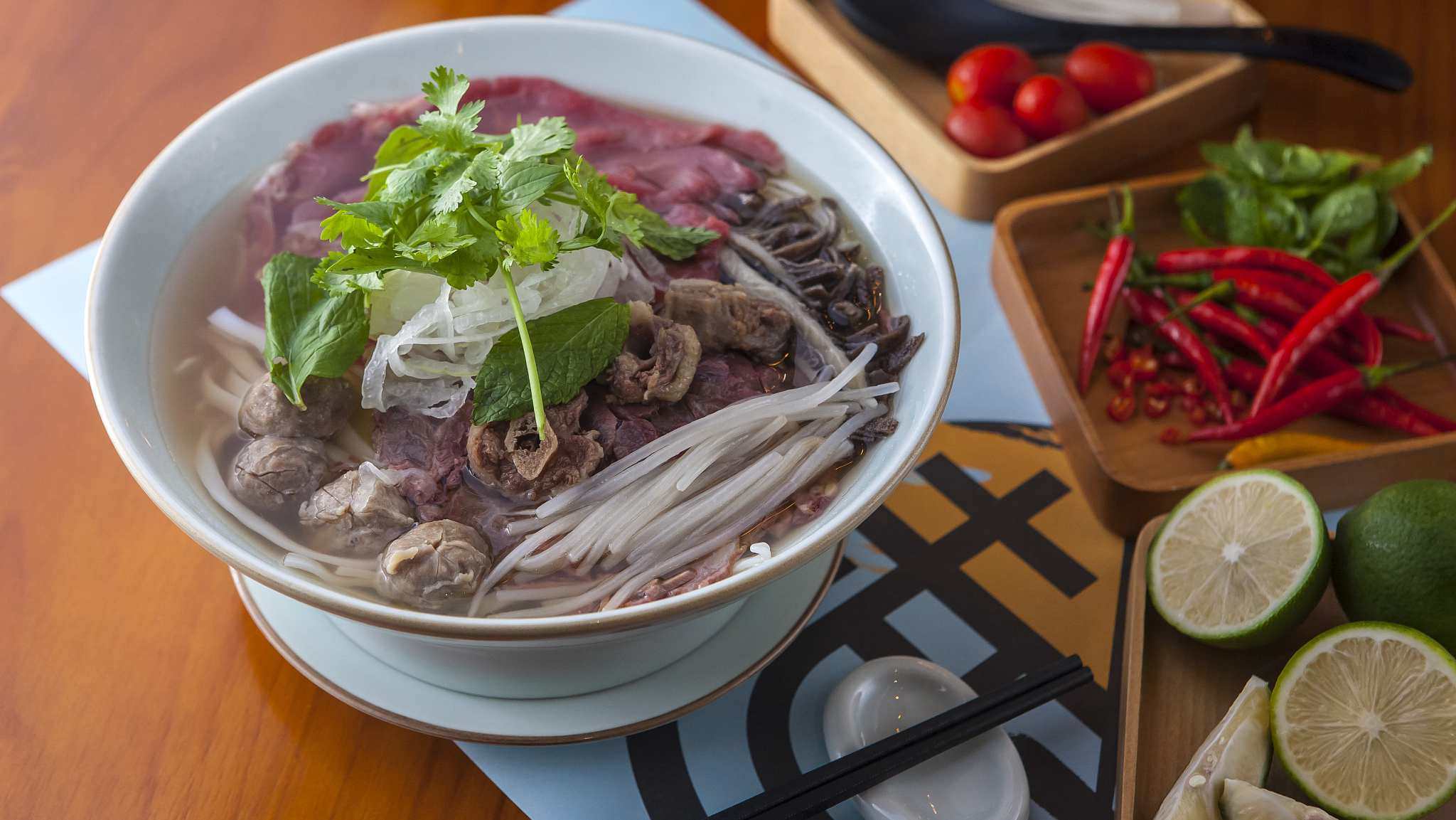
Flavor
15:46, 07-May-2019
For Vietnamese, pho means home
Updated
16:47, 08-May-2019
By Wang Xiaonan
05:08

One of Vietnam's most signature dishes, pho can be seen everywhere from humble street stalls to deluxe bistros. For outbound tourists, it's a must-try delicacy embedded in the country's sumptuous and evocative history. For natives, it's more than food: It's a bowl of happiness and nostalgia.
Nguyen Thi Ngoc Anh, now 61 years old, is a pho shop owner in the central Vietnamese city of Da Nang – a popular tourist destination boasting marble mountains and pristine coral reefs. She inherited the shop from her mother-in-law who opened it in 1987. Over the past three decades, Anh has been devoted to making every bowl of pho with the recipe of her mother-in-law because its flavor suits people from different regions of the country.
The special recipe features a savory, thick broth gained from simmering 30 kilograms of bones for three days, as well as superior sirloin which she would cut along the fiber into thin slices. Anh's small shop is always brimming with customers from both home and abroad every day and their compliments for her pho make her proud and happy.

Pho, Vietnam's iconic noodle soup. /VCG Photo
Pho, Vietnam's iconic noodle soup. /VCG Photo
The essence of a bowl of pho lies in its broth. Cooks will add beef bones such as those of the knuckles or shin to a pot of water, and simmer the concoction for about two to six hours. Restaurant quality broth takes 12 hours or more. Meanwhile, fish sauce, spices, and onions give the soup its signature flavor. It is then poured on soaked rice noodles, while bean sprouts, cilantro, hoisin sauce and other flavorings are sprinkled on top.
Unlike most other popular cuisines which can be traced back to their origins, pho has a blurry beginning. It might have emerged in the late 1880s when the country fell under French colonization. Hanoi in northern Vietnam is believed to be pho's birthplace, where it was adapted from the French soup pot-au-feu.
Prior to the establishment of the French Indochina, Vietnamese in the north had used cows to till the land instead of slaughtering them for food. It was the French that changed the appetite of the locals. Beef eventually made its way onto the dinner table of Vietnamese.
Things changed fast in those years of war. After WWII, northern Vietnamese fled to the south, together with their pho recipes. Different from the north, the south centered around Saigon, known as Ho Chi Minh City today, boasts galore spices, which precipitated varieties of the national dish. That's why we can enjoy a bowl of pho with fish, chicken, pork and seafood today.
After the Vietnam War that saw the country unify, refugees and others immigrated to many different parts of the world, bringing their cultural identity with them. That's why pho, its varieties, and other local foods can be seen in different clusters throughout China, Canada, and the U.S. Pho has taken on local variations, allowing those of Vietnamese descent to enjoy the flavors of their heritage wherever they are.

SITEMAP
Copyright © 2018 CGTN. Beijing ICP prepared NO.16065310-3
Copyright © 2018 CGTN. Beijing ICP prepared NO.16065310-3